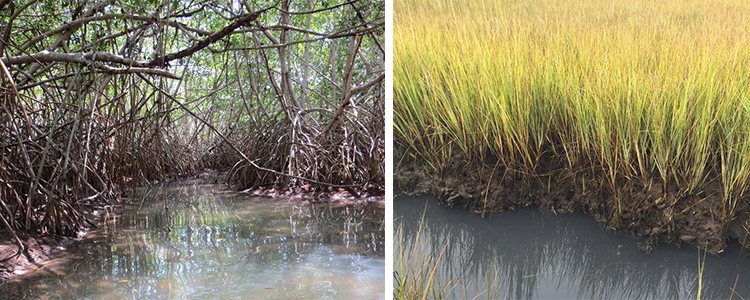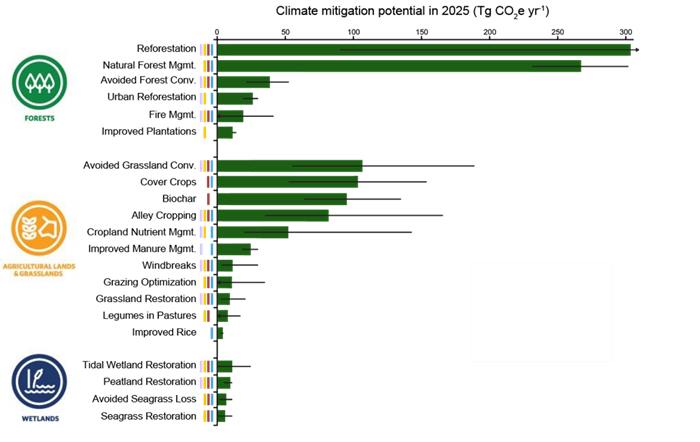Climate change has been in the news a great deal recently. The Intergovernmental Panel on Climate Change (IPCC) has released two very important reports just recently in 2019 looking at the role of terrestrial lands and oceans in climate change. And in late 2018 the IPCC released a special report about warming that suggested among other things that this is not a problem of the future but that climate change is already occurring and we are feeling its impacts (I find the Summary for Policy Makers especially useful). The report also concluded that humanity must make major strides in reducing greenhouse gas emissions by 2030 and must reach zero emissions by 2050 in order to limit warming to 1.5 ˚C and to avoid the worst impacts of climate change.
This is serious. As Greta Thunberg states in this very compelling YouTube video, “This is not a drill.” I agree 100%. So, did you know there is already a powerful technology available for removing carbon dioxide (CO2) from the atmosphere? This technology is called photosynthesis and is the process plants have been using for millions of years to remove CO2 and make sugars on which we all depend for our food. To be clear, plants cannot solve the climate change problem for us on their own. We MUST reduce emissions and stop burning fossil fuels. We must increase the production of renewable energy and increase our energy efficiency so that we need less energy and are only using clean energy and we need to do this over the next two to three decades.
But plants offer a tremendous opportunity to help reduce atmospheric CO2 at a time when we do not have any other technology that can scale to global scales in a cost-effective manner that will remove CO2 and mitigate climate change. This is why I have devoted the last 9-plus years of my career to promoting the role of coastal wetlands in carbon sequestration and storage. Carbon stored in coastal wetlands is called “blue carbon” and I will be presenting the science and policy of blue carbon at the upcoming annual Sigma Xi Annual Meeting in Wisconsin, Madison. See Figure 1.

Figure 1: Mangroves and salt marshes are two of the coastal “blue carbon” wetlands that sequester a great deal of carbon in their wood (mangroves) and soils (both). Note the dark soil shown in the salt marsh photo. This dark color comes from the organic matter in the soil which is from the stored carbon.
Coastal wetlands are not the only ecosystems taking up and storing carbon, however. I was part of a study for the whole U.S. examining how much of our emissions we could reduce by better managing, protecting, and/or restoring natural ecosystems. Forests, grasslands, urban trees, agricultural lands, and other wetlands are also taking and storing carbon, some of it in the biomass of the plants (such as the carbon stored in wood) but also carbon is stored in soils, particularly those that are rich in organic matter. This means that practices such as reforestation, better forest management, and avoided forest conversion would help our forests sequester more carbon. And practices such as planting cover crops, better nutrient management practices, and grassland restoration or avoided conversion are practices which would allow our working farm lands and grasslands to sequester more carbon. For wetlands in the U.S. the biggest opportunities are to restore tidal wetlands and peatlands, and to avoid the loss of or restore seagrasses. See Figure 2 for more details.

Figure 2: Natural climate solutions for the U.S. If the U.S. implemented all of these practices where nature could help reduce CO2, we could sequester ~21% of the U.S. annual emissions. Figure from: Fargione et al. 2018. Natural Climate Solutions for the United States. Science Advances.
The message here is hopeful but urgent. Humanity has only a couple of decades to avoid the worst climate change impacts; we must move swiftly to reduce emissions. And natural solutions can be a key component of climate change mitigation. Nature can play an important role if we halt habitat loss around the globe and seriously commit to restoring and better managing ecosystems so that they can sequester carbon and reduce greenhouse gases in the atmosphere. We have options but we MUST implement them now. I hope you can come to my talk to learn more about coastal blue carbon in Madison!
Ariana Sutton-Grier is the 2019 Sigma Xi Young Investigator Award recipient. She is a Sigma Xi member and a visiting associate research professor at the University of Maryland, College Park. She is an ecosystem ecologist with expertise in wetland ecology and restoration, biodiversity, biogeochemistry, climate change, and ecosystem services.
Related Reading:
The Ocean Is Key to Achieving Climate and Societal Goals, from Science